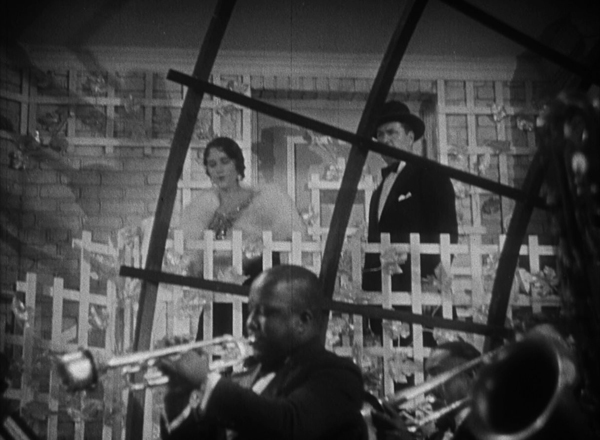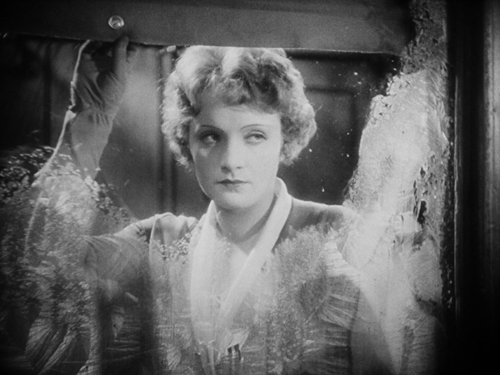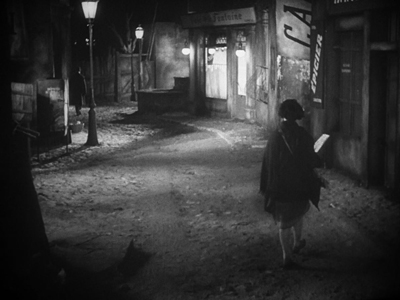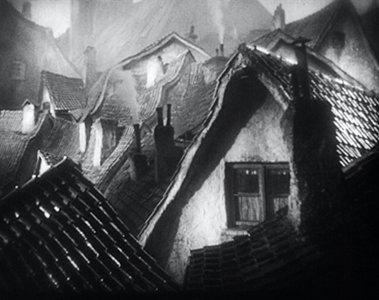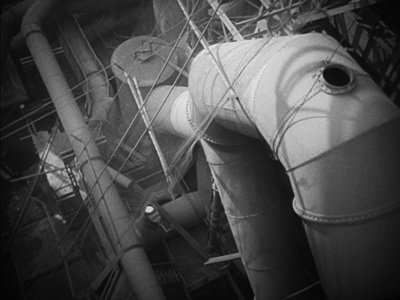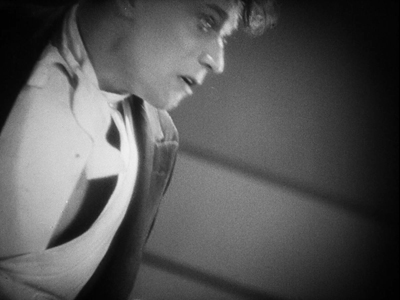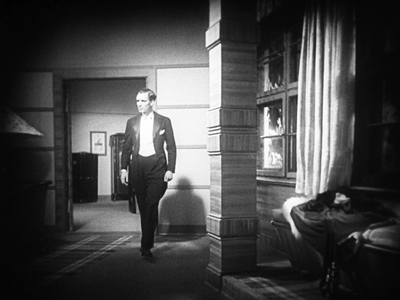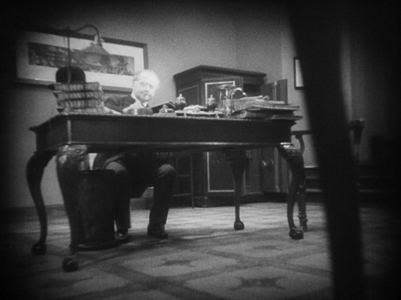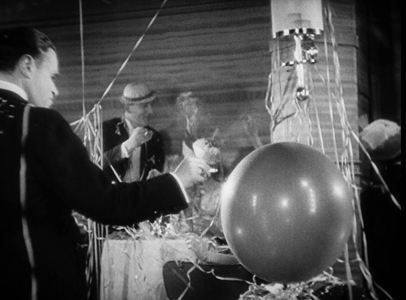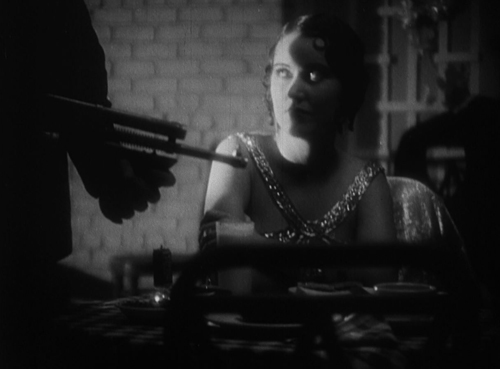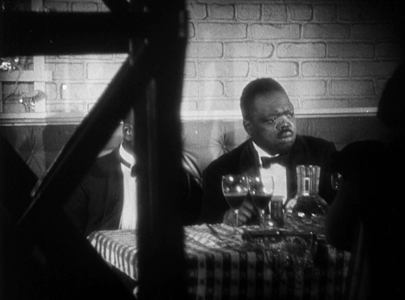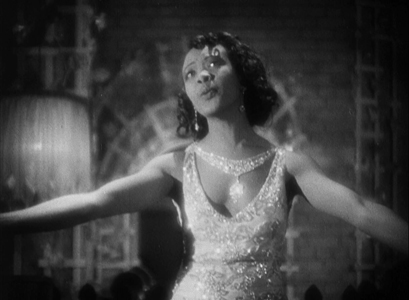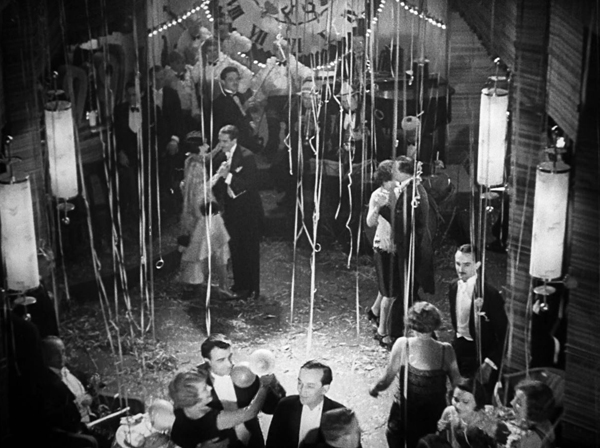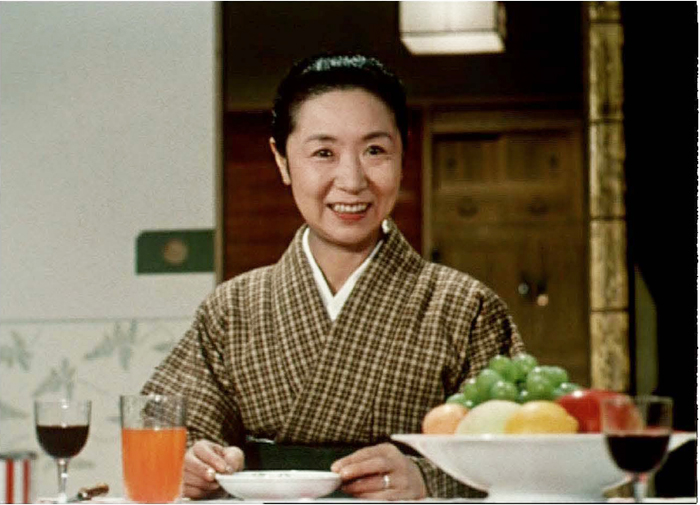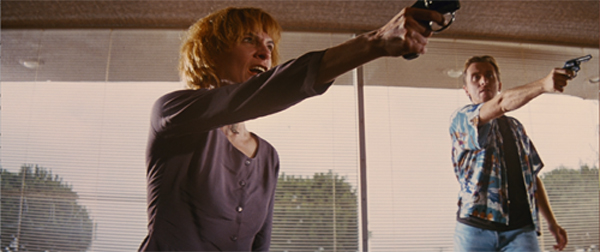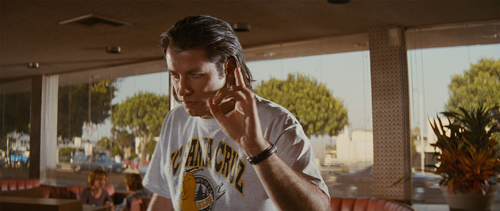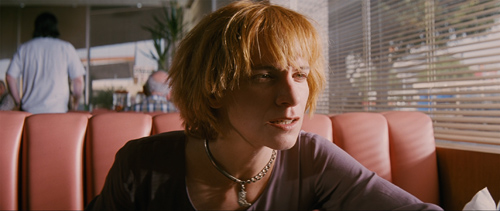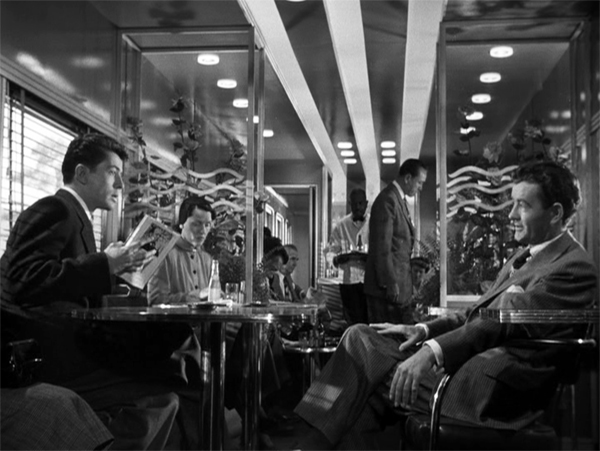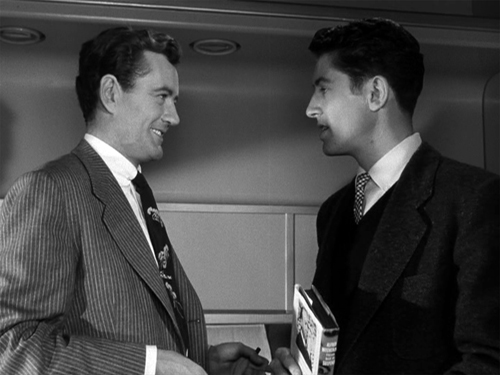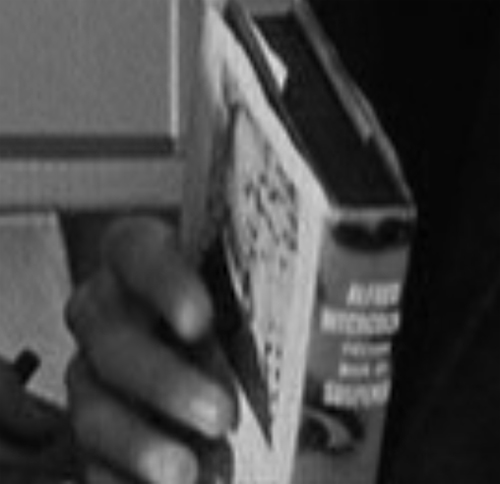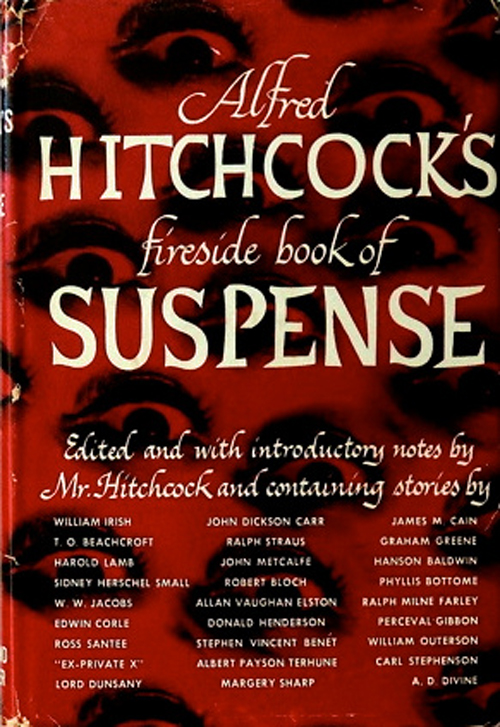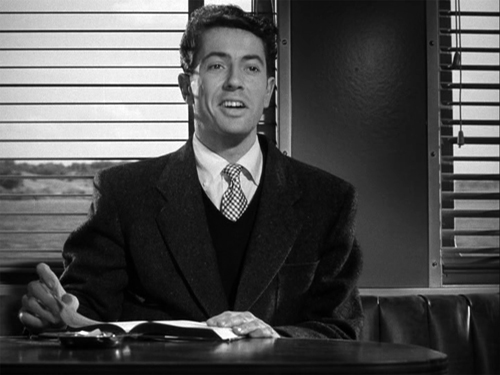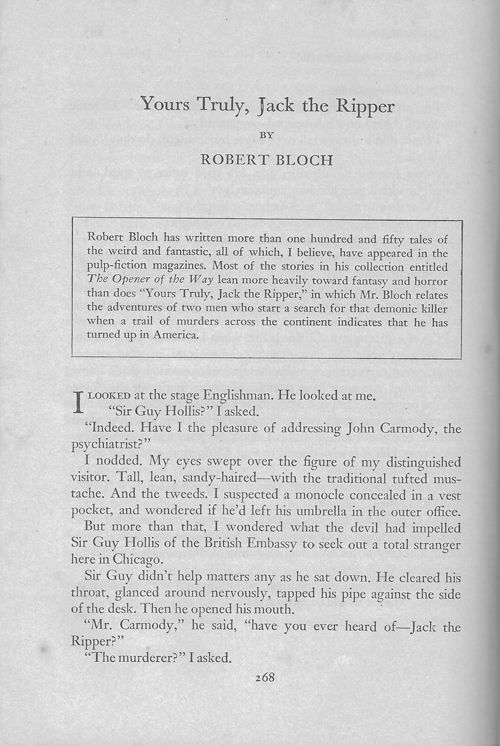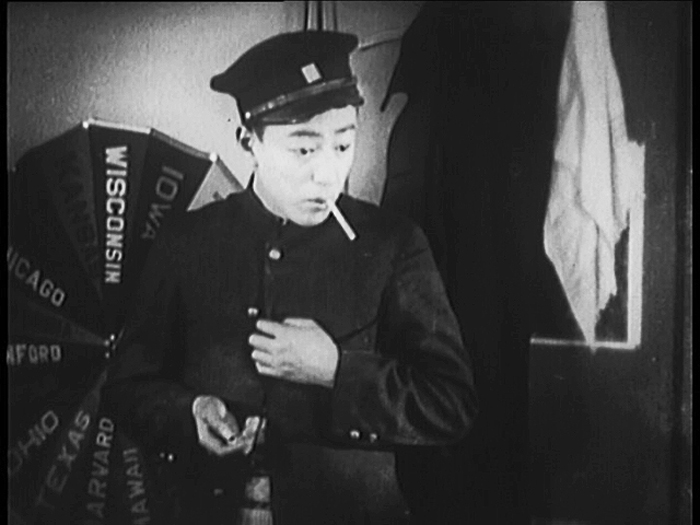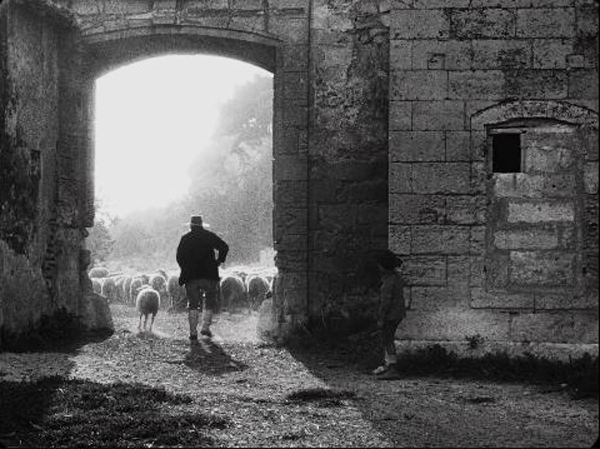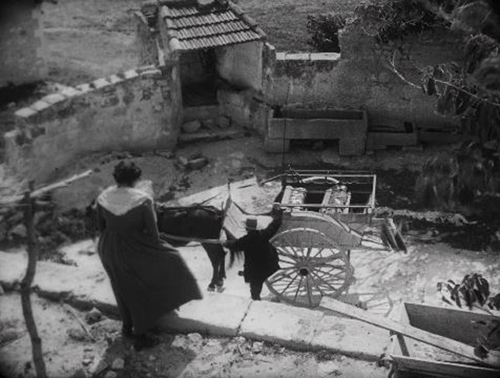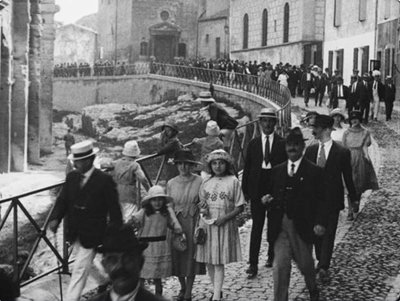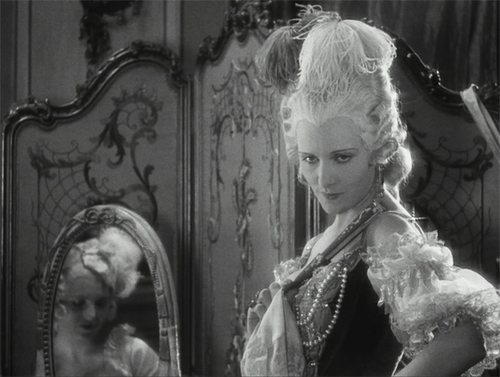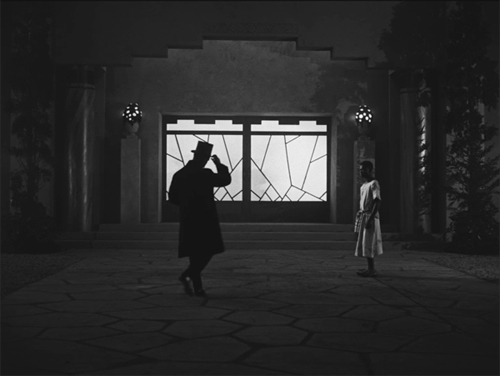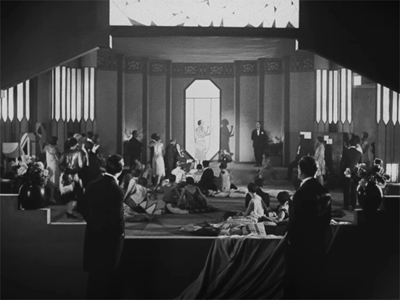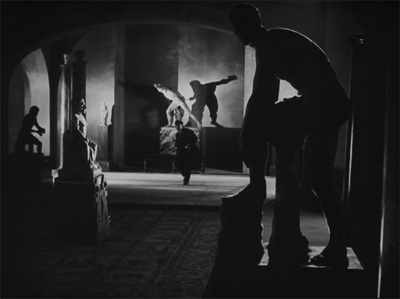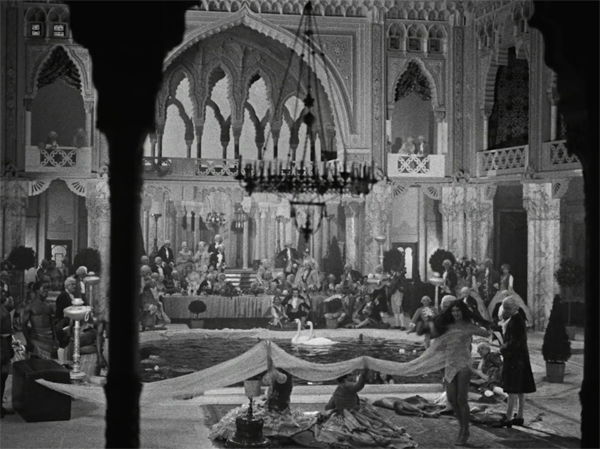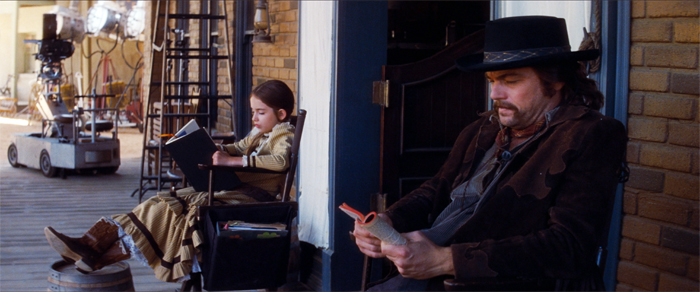
Once Upon a Time . . . in Hollywood (2019).
I guess what I’m always trying to do is use the structures that I see in novels and apply them to cinema.
–Quentin Tarantino
DB here:
 Tarantino has often embraced print-based texts that revise or complement his films. He’s shared screenplays that differ sharply from the finished product, and written graphic novels derived from Django Unchained. Now he’s gone farther. He’s published a novelization that playfully modifies the film’s title: Once Upon a Time in Hollywood, without the three-dot ellipsis.
Tarantino has often embraced print-based texts that revise or complement his films. He’s shared screenplays that differ sharply from the finished product, and written graphic novels derived from Django Unchained. Now he’s gone farther. He’s published a novelization that playfully modifies the film’s title: Once Upon a Time in Hollywood, without the three-dot ellipsis.
Some will say, rightly, that the book is another instance of today’s tendency toward cross-platform narrative, what Henry Jenkins calls transmedia storytelling. As such it sells more stuff, builds fan connoisseurship, and provides academics like me more to talk about.
But I think it does more. Tarantino has long borrowed from popular literature, particularly crime fiction. (The book I just finished writing tries to trace out some of his debts.) With his novelization, he returns the favor by transferring some of his creative methods to the long-form prose format. Moreover, he realized that some conventions of two genres–the movie novelization and the Hollywood novel–could be steered in fresh directions. What he provides, I think, is not only a fresh path through the story world that will tease fans but also another of his accessible experiments with narrative form. As a bonus, the book shows the author to be a stimulating historian of American studio cinema.
Of course what follows contains spoilers for both the film and the book. But since you’ve had a good stretch of time to catch the film, and since the book currently sits at the top of the New York Times bestseller list, I’m hoping a fairly close analysis won’t scare away many readers. Even if you don’t read on, maybe the mere existence of this entry will send you to the two items in this intriguing multimedia package.
TV or not TV: What is the question?
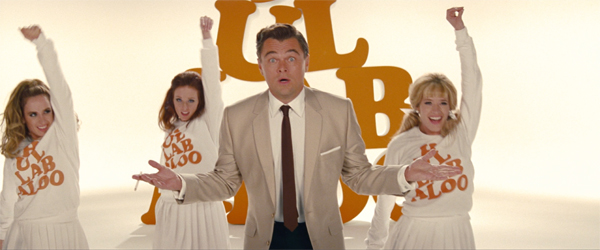
The film weaves together the doings of actor Rick Dalton, stuntman Cliff Booth, and actor Sharon Tate, over the space of a few days. Rick has been hired to play a villain in a pilot for the TV series Lancer, and Cliff, no longer employable as a stuntman, fills his days serving as Rick’s personal assistant, maintenance man, and boon companion. Sharon, wife of Roman Polanski, lives a life of partygoing, shopping, and occasional screen performing. These characters cross paths with members of Charles Manson’s cultist “Family,” who in 1969 actually murdered Sharon and her guests in a home invasion. In the film, things turn out differently. The novelization takes up these characters and basic incidents but recasts them.
The typical novelization is published to promote a film just before its film’s release, and it sometimes serves as an enduring fan memento or a contribution to a franchise’s “canon.” The writer is often working from a screenplay or a detailed synopsis, so changes made in the later phases of production can render the finished film quite different from the book. But Tarantino’s novelization comes two years after audiences saw his film. Many readers have already seen the film, possibly several times, so they will be sensitive to deviations from the original. Tarantino exploits that knowingness in ways that are sometimes traditional, sometimes striking.
As you’d expect, a lot of the book is devoted to filling in the backstory of the three major characters. Flashbacks show how Sharon got to Hollywood and how Cliff became a stuntman (and a killer). Like other novelizations, Tarantino’s fleshes out subsidiary characters as well, providing the sort of enrichment of the story world that fans enjoy. And some scenes omitted from the finished film are dwelt on in the novel. For example, in the original pilot the Lancer half-brothers meet when they accidentally come to town on the same stagecoach. (Sorry about the punk YouTube rip.) Tarantino, always obliging, shot the scene in his own way and provides it as a bonus material on the disc.
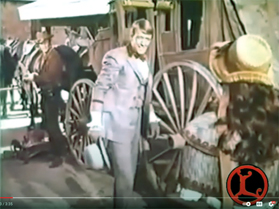
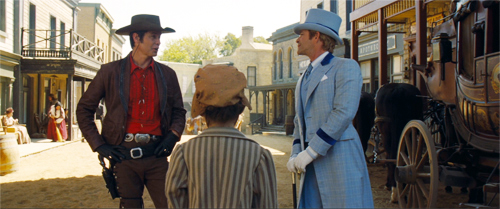
The woman in the TV show is the patriarch’s ward, but in the novel and the film she becomes his daughter Mirabella, and thus the men’s half-sister.
Because a novel can plunge us more deeply into characters’ minds, Tarantino can share the thoughts of Cliff, Rick, and Sharon, as well as secondary figures like Squeaky Frome, Pussycat, Jay Sebring, Roman Polanski, and Manson himself. This widening of perspective alters Tarantino’s habitual storytelling method.
I’ve argued that his films rely on block construction, longish “chapters”attached to one character or set of characters. Whether offering us present-time scenes or flashbacks, they remain fairly self-contained chunks, often set off by titles. As a film, Once Upon a Time . . . in Hollywood broke with this scheme somewhat and presented more alternation among shorter scenes, though still anchored to one of the three main characters.
The novel is even more chopped up, presenting the story in twenty-five chapters, many of them including shifts in time or viewpoint. The transitions are clearly marked, with inner monologues rendered in italics and verb tense differentiating the present-time story from flashbacks. In all, the short, sharp scenes sample a broader panorama of Hollywood life than we find in the film, yielding something more like a network narrative.
The same expansion goes for time. The film leaves Rick’s future somewhat open, but the book sketches in his career after his confrontation with the Family marauders. We learn fairly early in the book that in the 1970s he will cut down on his drinking, an important motif in the book. We also learn the career arc of Trudi Fraser, the little girl with whom Rick performs in the Lancer pilot. A more conventional novelization probably wouldn’t include this anticipatory material, because it would foreclose developments that filmmakers might want to conjure up in a sequel.
Still, Tarantino does adhere to his block aesthetic in an odd way. Big chunks of the Lancer backstory not dramatized in the TV episode are given to us in dedicated chapters, written as if they were extracts from another novel. Recounted by an omniscient narration, they treat the Lancer family history on the same fictional level as the contemporary Hollywood plot. Why? I’ll try to explain below.
Tarantino has experimented with viewpoint shifts and replays throughout his work, most notably in the repeated money-drop sequence in Jackie Brown. Now, like a writer of fan fiction, he can extend the strategy to prose. So an episode registered by one character in the film can be filtered through another in the book. The most extended viewpoint displacement involves Cliff’s visit to Spahn ranch. In the film, we’re attached to him throughout, but in the book everything that happens in that scene is restricted to what Squeaky sees and hears. Viewers are likely to remember Cliff’s fruitless conversation with George, so the replay allows Tarantino to build up a more sympathetic portrait of Squeaky than we get in the film.
Two other narrative strategies are more surprising, but both target readers’ memory of the film. First, the book begins with an office conversation between Rick and agent Marvin Schwarz that echoes the restaurant meeting that opens the film. The reader is likely to think that the book’s ending will resemble the film’s end, which shows the Manson followers attacking Rick’s house rather than Polanski’s. This is the most drastic “alternative history” in the film, like the assassination of Hitler in Inglourious Basterds.
But the reader who’s seen the film will be thrown off on page 110. In a flashforward to March 1970, Rick gets a call from director Paul Wendkos inviting him to join a project. Prompted by a teasing remark by Wendkos, the narration quickly summarizes the summer 1969 invasion and its aftermath before briskly scanning the effect on Rick’s career in the seventies. If you’ve seen the movie, now you can’t be sure what will happen at the end of the book. Will the book’s climax replay the movie’s firefight? Or will something else tie up the plot? Call it show-offish or shrewd, Tarantino’s anticipation of the film’s ending has activated the reader’s awareness of his choices about narrative structure.
Related to this replacement-ending problem is a shift in rendering the filmmaking process. The film shows two scenes of the Lancer pilot being filmed. In the first, Johnny Madrid/Lancer rides into town, shoots down a hired gunman, and discusses joining Caleb DeCoteau’s gang. In the second scene, Caleb holds Lancer’s daughter Mirabella hostage while he arranges for ransom from Scott Lancer.
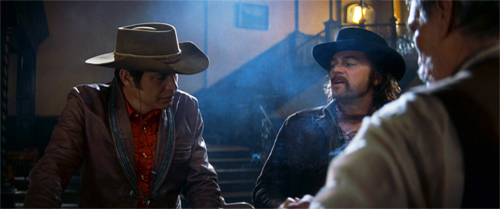
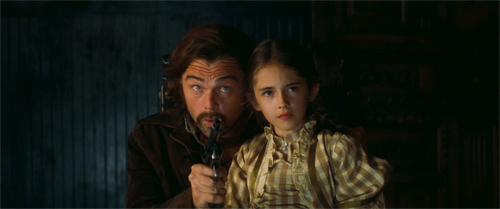
But the novel version only alludes to these scenes; it doesn’t dramatize the filming of them. The meeting of Johnny and Caleb is presented as part of the inserted Lancer “novel,” while the hostage parley is merely mentioned. The only scene that the book describes being shot is one for Rosemary’s Baby.
Instead, the novel dwells on what happens before shooting. On a porch Rick and Trudi discuss acting in general, and later she urges him to scare her during the hostage scene. Tarantino suppresses the act of filming this big scene, simply indicating laconically: “And Caleb and Miranda act out the scene.” Likewise, Sharon Tate, recalling her slapstick scene in The Wrecking Crew, dwells on what happened before the camera rolled.
Why the shift from filming to preparation? I’ll suggest one possibility a bit later.
Palimpsest of a period
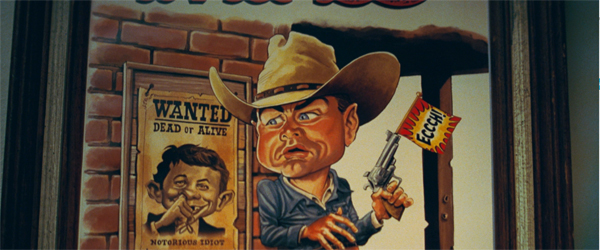
Once Upon a Time in Hollywood is a “Hollywood novel.” Typically that genre centers on the rise and fall of a fictional star (Inside Daisy Clover) or an executive (The Last Tycoon), with glimpses of production woven in. The fictional characters dominate the plot, but there are references to actual people and studios, which (libel laws being what they are) serve mostly as colorful background. Tarantino follows these guidelines, but he offers a deeper analysis of American film history than any other Hollywood novel I know.
His isn’t a dry historical approach, though, because of the flamboyance displayed by the narrator. Instead of giving us a prudent bystander’s account in first-person narration, as What Makes Sammy Run? does, the book presents an omniscient yarn-spinner addressing us through phrases like “And bear in mind,” “Now, truth be told,” and “You must remember.” At the same time, efforts at purely literary bravado mix the cheap tabloid alliteration of James Ellroy with the weirdness of Cornell Woolrich.
Still, none could really match Aldo Ray when it came to publicly played-out poignant pity.
The six powerful equines come to a gentle stop.
The diminutive Polanski sports bed head on his cranium.
Who’s speaking? This narrator is at once omniscient and lightly personified. The Lancer segments are straight Western-novel narration, except when they’re not.
With his light Texas twang, Monty sang out, “Royo del Oro, last stop!” The backlit sunshine rays filtered through the gauze-like brown dust in the way, a hundred years from now, all cinematographers of western movies would hope to duplicate.
An “I” almost never creeps in, but throughout we’re hearing the Tarantino who produces interview patter and whose screenplays insert wise-ass stage directions.
Freddy finishes his playing-possum piss (Reservoir Dogs).
Everyone is smiling except you-know-who (Pulp Fiction).
From the floor, the bloody, sweaty, and in excruciating pain (she’ll probably lose that leg) German movie star says to the two American soldiers she’s just meeting for the first time. . . . (Inglourious Basterds).
Once Upon a Time in Hollywood goes some way to confirming Tarantino’s repeated claims that when he stops making movies, he’ll turn to novels. I will read them.
Every Hollywood novel is in a sense an alternative history, I suppose, but this unpredictable prose helps prepare us for something peculiar. Start with the time frame. The first and longest stretch of the film takes place on Friday 7 January 1969 and the following day, and these chapters are tagged with time indications. The film then skips ahead to the day and night of 10 August 1969, with the attack on Rick’s home. The book adheres to the February dates but as we’ve seen it “spoils” the film’s climax by announcing the massacre fairly early on.
The central action of the book confines itself to the two days when Rick meets Schwarz and shoots the Lancer pilot, on 7-8 February, 1969. But that chronology is thrown off by another tag. After chapters presenting the day and evening of Friday the 7th, a new chapter indicates that Pusssycat’s Kreepy Krawl (another Ellroyism) takes place at 2:20 AM on that day. It’s either a flashback to an early-morning period before the previous four chapters (why?) or a scene taking place after the earlier chapters, and so is occurring at 2:20 on the 8th, not the 7th.
The Krawl anomaly is an early indication that a misaligned calendar governs the whole book, as it did the film. The actual Lancer pilot was shot in 1968, not 1969. Tarantino has merged events of one year (Rick’s career crisis, the Lancer shoot) with those of a later one (the actual Tate-LaBianca murders).
The typical Hollywood novel inserts made-up stories into a world of real ones, but Tarantino goes further. Your typical director would have pasted Rick on the cover of Time, but Tarantino goes for Mad. Your average movie-geek director would have had Rick reading an actual western novel, maybe Hombre in homage to Elmore Leonard. Instead, Tarantino invents a novel, Ride a Wild Bronc, by the real author Marvin H. Albert, because he wants a parallel between Rick and that book’s hero Easy Breezy. (The fact that Albert himself wrote many novelizations is a bonus.) Likewise, amid a flood of information about genuine Paul Wendkos films and stars therein, Tarantino deletes one actor (James Franciscus) from Hell Boats (1970) to cast the fictitious Rick in the part.
The substitution gambit is literalized in the film, when we learn the gossip that Rick supposedly just missed getting the McQueen part in The Great Escape (1963).
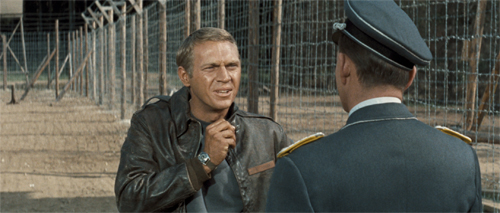

A comparable substitution conceit in the book is the jumble of publisher advertisements printed in the back. What could Tarantino’s book promote? Other books of the period published by Harper, of course: Oliver’s Story (1978), Serpico (1973), and Leonard’s The Switch (1978). The dates suggest that the “original” version of Once Upon a Time in Hollywood was published in the late 70s, and this accords with hints in the narration and the book’s design. These period ads sit alongside one for the fake Ride a Wild Bronc and one for a purported hardcover edition of Once Upon a Time in Hollywood (fake? forthcoming?).
Yet these dabs of phony history allow the book to float some genuine historical analysis. The constant references to obscure movies and TV shows might be taken as merely Tarantino’s nerdy self-indulgence. In fact, these citations fit into a fairly coherent cross-section of the period’s filmmaking and film culture, with the trends filtered through the business decisions and personal tastes of his characters. 1960s Hollywood turns out to be a palimpsest.
One layer is the fading of the studio system, reflected in agent Schwarz’s boast that he handles old royalty like Farley Granger and Joseph Cotten. Rick expresses his admiration for classic B-picture directors Wendkos and William Witney. Sharon’s backstory, when she hitched a ride to LA, reminds us of the enduring Hollywood myth of fresh-faced outsiders breaking in.
There’s also the new competition from European genres and overseas art films. Cliff, who scorns Antonioni and Resnais, is a big fan of Kurosawa and I Am Curious–Yellow. Now a European arthouse director has made a smash American hit, Rosemary’s Baby, and Rick fantasizes being tapped by Polanski. By contrast, Rick is reluctant to venture into spaghetti westerns, the new territory for a has-been US star.
“TV,” people used to say, “gets ’em on the way up or on the way down.” That’s been pretty much Rick’s career trajectory. Broadcast television has disrupted everything. B-directors like Wendkos shift between the two media, but the A-list older stars can’t sustain a series. Still, the narrator admits that some of these “sought to subvert their personas,” as Henry Fonda did in Once Upon a Time in the West.
Young talent is on the make. James Garner, James Coburn, and many other TV stars can jump to film, while Lee Marvin can shift from B-film villainy to TV heroism (M Squad) and return to films to play dark lead roles. The most shining example is Steve McQueen, who after his series Wanted–Dead or Alive became a top film star. In Tarantino’s film, he’s briefly seen commenting on Polanski’s ménage, but in the book McQueen haunts Rick’s life. The misbegotten anecdote about The Great Escape follows him everywhere.
At forty-two Rick is caught between two trends. He’s loyal to older directors and a classic genre, and he hates Eurowesterns and the counterculture. But to keep working he’s in competition with “the three Georges”–Peppard, Maharis, and Chakiris. Ten years ago he had his own series. Now he must wear a mustache and a biker wig and be the bad guy shot down by the newest “swinging dick.”
Said dick would be, in the Lancer pilot, James Stacy, to whom an entire chapter is devoted. He is the next failed McQueen, the young paladin who started memorably on Gunsmoke but now realizes that the clean-cut bad boy is on the way out. He admires Rick’s early work and envies Rick’s “fucking fly” look as Caleb. He yearns to wear a mustache.
The TV western has developed its own conventions, which Tarantino’s novel filters through the characters’ awareness. Schwarz introduces us to the antagonism between the series hero and the heavy, emphasizing that with every one-shot appearance, the guest star’s image suffers. After Rick reads the Lancer script, he admires its boldness in choosing as a protagonist Johnny, the sort of cocksure hothead who’d normally be shot down in the last act. Trudi is well aware that she is “just the ‘little tyke’ series regular.” More broadly, the book’s narrating voice realizes that westerns are based on “the man of principle pushed past his breaking point and beyond his nature. Most of Greek tragedy, half of all English theater, and three-quarters of American cinema operated from this premise.”
Men in war and at work
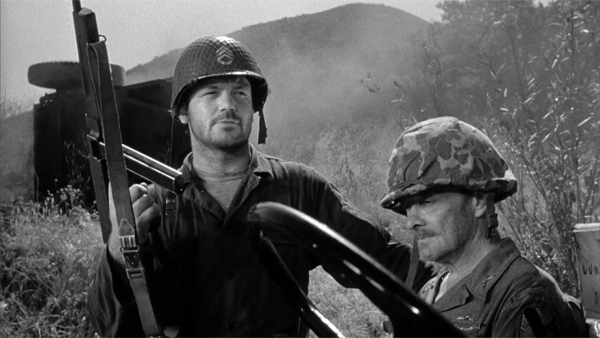
Men in War (1957); Aldo Ray on left.
The book spares some thoughts for women working in Hollywood. Schwarz’s secretary Miss Himmelsteen winds up becoming a talent agent who also performs fellatio on her clients. Sharon Tate, who prefers the Monkees to the Beatles, is fully aware that she’s playing the role of “sexy little me” in most social encounters. Yet she genuinely enjoys the audience laughter aroused by her klutzy scene in the not-very-good The Wrecking Crew.
Still, the book dwells far more on the men. The Mannix episode on Cliff’s TV spells it out.
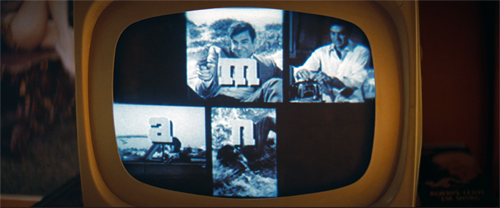
These men are anxious. Both Rick Dalton and James Stacy see their futures endangered. Charlie Manson is trying to build a career in the music business, but his clumsy networking reveals him as a loser. Most strikingly, in devoting seven chapters to Cliff Booth’s life story, the narration presents a composite of trends swirling through the period.
We who’ve seen the film know Cliff’s manic, LSD-buzzed defense of Rick’s home. But who is he? This war hero who has murdered his wife and three other people is a hard case with a soft spot for foreign films. He’s a dog lover who put his pit bull Brandy through harrowing fights. He hurls Bruce Lee against a car but, out of concern for George Spahn, worries that the hippies encamped on his ranch are exploiting him. If Rick and James’ niches in the hierarchy are shifting, Cliff knows his place is near the bottom. Living in a crummy trailer eating Kraft Macaroni & Cheese, he can survive thanks to his muscle and his wits. He might be a man of principle who’s just pushed past his breaking point a bit too often.
Enter Aldo Ray, an actual actor whom Tarantino has long celebrated. Despite working with George Cukor, Anthony Mann, Raoul Walsh, and other top directors, Ray destroyed himself through alcohol and wasteful spending. He gets his own chapter near the end, brought into the story when Cliff is stunting on a runaway production in Spain. While Charles Bronson is becoming a star, Aldo is sinking into a numb despair. He is what Rick or Stacy might become.
As the book closes, this parade of masculine misery replaces the film’s Manson Family siege. After finishing the day’s Lancer shoot, Rick and Stacy head out to the Drinker’s Hall of Fame, a tribute to great Hollywood drunks. Cliff and other acquaintances join them, and they share stories of their sex lives and the productions they worked on. Rick finally manages to spell out why he hates the Great Escape rumor. He admits to his peers that he never really had any chance for the McQueen part. That clarity seems to give Rick a dose of prudence: he leaves early because he needs to learn his lines for tomorrow. For the reader, the drinking bout chimes with Aldo Ray’s plight in the prior chapter, and it suggests how Rick will survive the 1970s. His reconciliation with Stacy will lead both to keep their alcoholism under better control.
Rick’s flash of self-discipline is among the many epiphanies that pile up in the final pages. Sharon, sweet-natured throughout, now gets annoyed with Polanski’s whining bossiness and maneuvers him into holding a pool party. Schwarz calls Rick and offers him a chance for a spaghetti western. Rick runs into Steve McQueen, and his resentment of the superstar drains away in a shared memory of male camaraderie, a pool game long ago. Above all, Rick gets a call from Trudi that resets his relation to his past and his craft.
An actor prepares
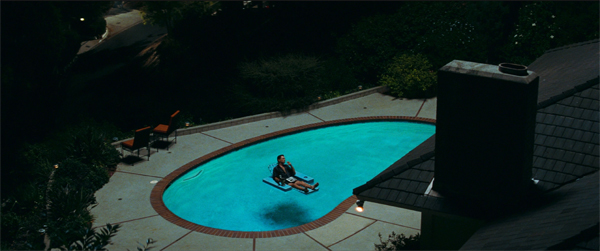
Tarantino admires directors, but he adores actors. Has any film more fully portrayed the insecurities of performers? Rick sees his career going down the drain while upstarts like Stacy and the coolly competent Trudi Fraser, only eight years old, are more professional than he is. Rick is baffled by the director’s pretentious ambitions (“Be evil sexy Hamlet”) and rages in his trailer when he blows his lines. Each small error confirms Schwarz’s diagnosis that Rick can flourish only in a downmarket cinema, below even episodic TV.
One of the film’s finest sequences builds enormous tension when it shows Rick struggling to keep up with Stacy in their saloon reunion.
Tarantino could have shot this sequence in 4:3 ratio and TV style, in accord with the Bounty Law commercial that opens the movie. But the bar sequence, like the hostage scene to come later, maintains the same stylistic tenor–widescreen, long takes, rich color–that presents the story of Rick, Cliff, and Sharon. Remarkably, we don’t see any shots of the director and crew watching the performance. The production staff remain offscreen, cueing Rick’s lines. Tarantino has fused the modern camera with the TV camera, “rewriting” the TV production with shadowy modern lighting and arcing camera moves. This filming strategy puts the pilot on par with the surrounding story, just as in the book the Lancer family saga carries the same weight as the 1969 story line.
At the same time, the sequence lets us see just how difficult film acting is. (You can see Stacy trying to match his spoon’s movements to get a clean retake.) An awkward axial cut-in to the bartender delivering Johnny’s beans may be hinting that already Rick has blown a line and they had to reshoot it.


Acting is hard. Even bad acting is hard. Could you or I do what Rick has to do in this scene?
Seeing Rick’s malfunctioning performance in this scene puts more pressure on the big hostage scene, which again runs as if it’s part of the surrounding film. But now, after Rick aces the scene, we get our first crew shot and the director’s happy reaction, along with Trudi’s whispered praise.
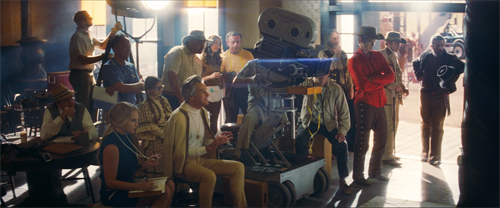
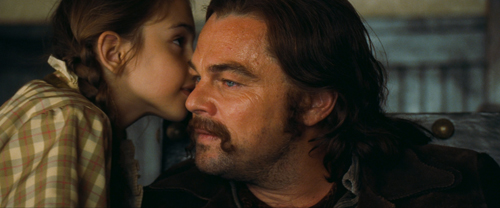
Even more than the film, the book pays homage to the strain of actors’ working lives. By sequestering the Lancer episodes in separate chapters, Tarantino can focus elsewhere on the sheer terror of preparation for filming them. Now we see why the book stresses the performers’ leadup to each shoot. We’ve seen in the film how harrowing it is to screw up, and the book digs into the panic of preparation.
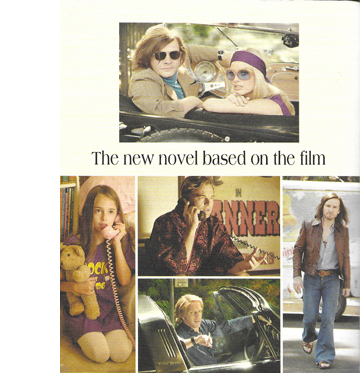 Which is why, I suggest, the book ends with one more phone call. (The back cover of the paperback hints at its imporance.) Suspecting that Rick is slacking off, Trudi calls Rick to goad him into rehearsing. As they start to run the lines, they slip into their characters. The narration cooperates.
Which is why, I suggest, the book ends with one more phone call. (The back cover of the paperback hints at its imporance.) Suspecting that Rick is slacking off, Trudi calls Rick to goad him into rehearsing. As they start to run the lines, they slip into their characters. The narration cooperates.
Caleb answers flippantly, “Greed’s what makes the world go ’round, little lady.”
The little lady says her name out loud: “Mirabella.”
“What?” Caleb asks.
The eight-year-old child repeats her name to the outlaw leader. “My name is Mirabella. If you’re gonna murder me in cold blood, I don’t want you to just think of me as Murdock Lancer’s little girl.”
Something about the way she says that registers with the outlaw. And suddenly it becomes important for Caleb to make her understand his fairness on this matter.
Through Rick’s performance the narration can plunge into Caleb’s mind. Things get even more complex when Johnny enters the scene, voiced by Trudi.
Trudi as Johnny points out, “Something happens to that money and we don’t get it, that’s our problem.”
Caleb spins toward Johnny and violently says, “Something happens to that money, that’s her problem!” With fire in his eyes, he tells Johnny Lancer, “Git it straight, boy! . . .”
Very soon Caleb will be shot dead, as enacted by Rick over the phone.
As usual, we won’t see the scene filmed, but Trudi foresees the result. “We’re going to kill this scene tomorrow.” Rick agrees. When she adds that they’re in a great line of work, Rick has his biggest epiphany. Trudi is right. The career that seemed so dismal has let him work with great actors, make love to beautiful women, enjoy luxuries most men never dream of.
He looks around at the fabulous house he owns. Paid for by doing what he used to do for free when he was a little boy: pretending to be a cowboy.
Boys will be boys, apparently forever.
Tracing three movie careers–a fading star, an aspiring starlet, and a below-the-line crew member–the film and the book provide Tarantino’s views not just of swinging-60s Hollywood (“You shoulda been there!”) but what working in The Business is like. Like most books and movies set in the film capital, these two texts show the pleasures and pains of a life that’s at once glamorous and dangerous.
But thanks to visual and verbal bravado, ingenious crosstalk between cinema and prose, and a respect for actors, Tarantino has gone beyond the usual finger-wagging chastisement of Hollywood excess. His taste for low-grade product, which has sometimes seemed an auteur provocation, is revealed as a respect for the desperate energy that animates even barely talented performers. That stubborn struggle, he suggests, is more rewarding than hippies’ hopes to mosey into nirvana.
Tarantino’s respect for those who dare to make movies, even opportunistic and down-market ones, puts him squarely in the classical Hollywood tradition of striving professionalism. His protagonist realizes, Capra style, that he has a wonderful life. Weird as it sounds to say it, Tarantino’s multimedia fairy tale might be the squarest story he ever told.
The epigraph comes from Graham Fuller, “Answers First, Questions Later,” in Quentin Tarantino: Interviews, rev. ed., ed. Gerald Peary (Jackson: University of Mississippi Press, 2013), 37.
More homework for the Tarantino squad: Trudi Fraser in the film is Trudi Frazer in the book.
Jeff Smith’s discussions of the film, here and here, were our most popular 2019 entries. They still hold up.
Through a blunder, I missed seeing Mark Minett’s careful email reply to my question about the saloon dialogue scene. Would such an arcing shot be likely in network TV of the period? His response is very helpful:
As for lateral or arcing camera movements during shot reverse shot sequences, I think these must be pretty rare. It’s possible a show might feature one every once and awhile, but these would likely stand out as a directorial flourish. The late 1960s television I’ve seen tends to have static s/rs, with variety achieved through camera height and angle, though I did just see an episode of Hawaii Five-O where the reverse shot was a moving close-up of a pacing Jack Lord.
Typically, you’d get mobile framing as you set up the key figures and then cut into the s/rs sequence. We sort of get that in the LANCER sequence as they sit to eat, and then there’s that interesting jump cut and track back reset as the man approaches with the food (I wonder if this was supposed to signal imperfection and authenticity or what?). Or, you could get a push in on a face at a climax, usually as they move out of the scene or to a commercial, as in the “1958” Bounty Law footage, though I think the more common option was just to hold on a close-up. That arcing move around the back of Olyphant’s head in Lancer, though, would be unusual, I think.
I wonder if it’s worth distinguishing this kind of arcing movement that basically just resets the framing of the scene, from the kind of arcing movements that seem more common now, which continue across cuts and underwrite the dramatic tension of a sequence. The former seems like more of a possible – though still probably very rare – option on the menu of that era’s filmed television, while I’d be really really surprised to find the latter. These are all just somewhat informed hunches, though, and there’s definitely room for real research here. Arcing and lateral movements aside, I’m also not sure when s/rs sequences in filmed TV started to regularly incorporate the slow push-ins that develop over the course of a sequence. So much worth investigating!
Mark should know. He’s the author of an excellent book on Robert Altman’s work, with close study of his TV projects. Another scholar of televisual style, Jonah Horwitz replied as well.
I don’t really have much to add to Mark’s response except nods of agreement. I don’t have the Tarantino movie to hand but the kinds of embellishments David describes would be pretty rare. S/R/S, as Mark notes, tends to be locked down (though not usually as metronomic as on Dragnet!)
A few folks have made some very tentative arguments for directorial style in midcentury US series TV partly on the basis of camera movement—that is, based on ambitious movements being the exception rather than the rule. Some of the former live TV directors I studied tried to import their love of long takes and elaborate camera movements into telefilm production with very mixed success (often they ran into the opposition of producers who wondered why they weren’t getting through x number of setups per day). Some of Joseph H. Lewis’s ’50s TV episodes stand out—in spots—for such things.
Re. Mark’s question, in live TV drama S/R/S is typically handled using long lenses, which made precise or ambitious camera movements somewhat difficult for such sequences. I argue in my dissertation that much of the innovation in S/R/S in live TV drama came from finding ways to get more frontal angles on characters without the camera shooting the reverse-field intruding into the shot. Earlier live drama S/R/S set ups have an obliquity owing to the shooting situation. (If you imagine the prototypical S/R/S staging with a camera placed in front of each character, you can see the problem.) Later directors and cameramen mitigated this through careful planning and extremely dexterous crews. But, again, this is in 50s/early 60s live TV—far from the late 60s telefilm that Tarantino is supposedly pastiching.
I wonder if the partially anachronistic shooting style of the Lancer segment could be motivated by the dream-film aspect of the movie (or maybe given Tarantino’s tendency to flagrant stylization we don’t even need recourse to a more specific alibi).
P. S. 21 July 2021: Tarantino discusses the book in a fascinating interview with Mike Fleming, Jr. at Deadline.
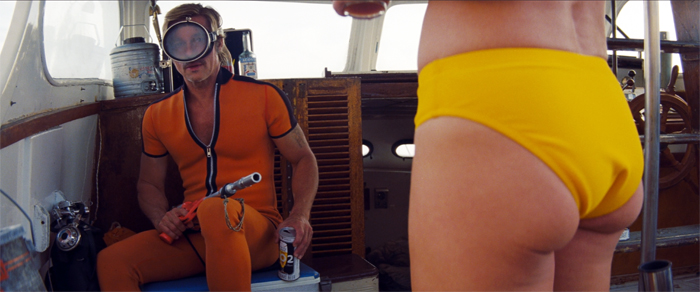
Once Upon a Time . . . in Hollywood.












